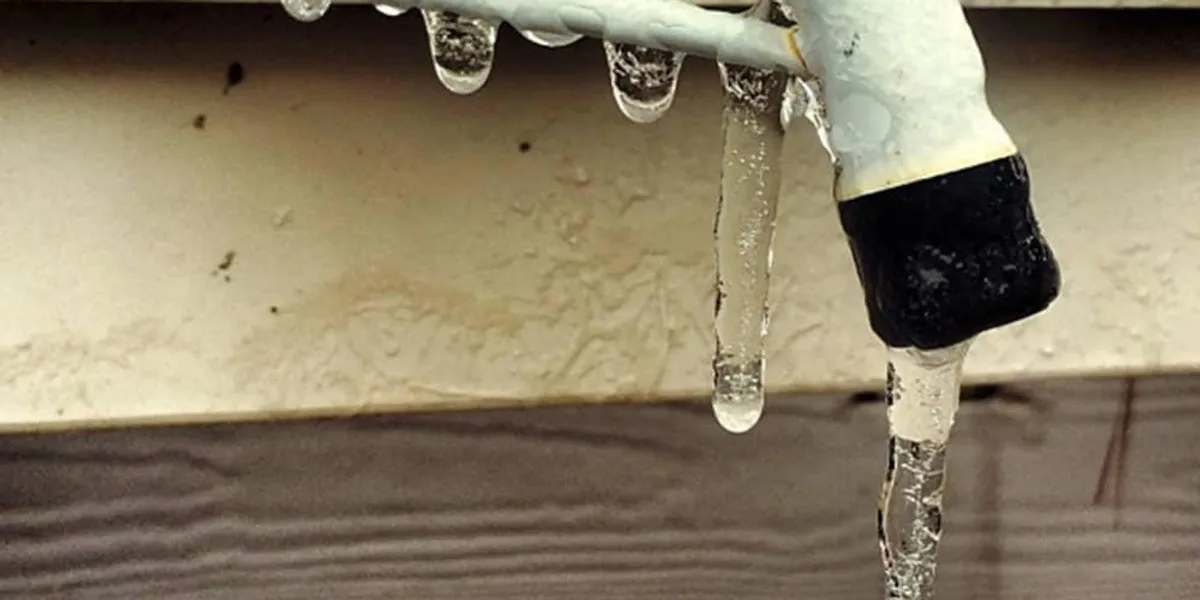Prevent Frozen Pipes in Cold Weather: Professional Strategies
Prevent Frozen Pipes in Cold Weather: Professional Strategies
Blog Article
What are your ideas concerning Preventing and dealing with frozen pipes?

Winter can wreak havoc on your plumbing, especially by freezing pipes. Below's how to stop it from happening and what to do if it does.
Intro
As temperatures drop, the threat of frozen pipes increases, potentially bring about pricey fixings and water damage. Comprehending exactly how to prevent icy pipelines is essential for homeowners in chilly climates.
Recognizing Icy Pipelines
What triggers pipes to freeze?
Pipelines ice up when subjected to temperature levels listed below 32 ° F (0 ° C) for prolonged durations. As water inside the pipes freezes, it expands, putting pressure on the pipeline wall surfaces and potentially creating them to rupture.
Threats and damages
Icy pipelines can bring about water interruptions, building damage, and expensive fixings. Ruptured pipelines can flooding homes and create considerable architectural damage.
Indications of Frozen Water Lines
Identifying icy pipes early can prevent them from bursting.
Just how to identify icy pipes
Search for lowered water flow from taps, unusual smells or noises from pipes, and noticeable frost on exposed pipelines.
Avoidance Tips
Protecting vulnerable pipes
Cover pipelines in insulation sleeves or make use of heat tape to secure them from freezing temperatures. Focus on pipes in unheated or outside locations of the home.
Heating methods
Keep indoor rooms adequately heated, particularly areas with plumbing. Open cupboard doors to allow cozy air to distribute around pipes under sinks.
Shielding Outdoor Pipes
Garden pipes and exterior taps
Detach and drain yard pipes prior to winter months. Mount frost-proof faucets or cover outside taps with protected caps.
What to Do If Your Pipes Freeze
Immediate activities to take
If you presume icy pipes, keep taps open up to alleviate pressure as the ice thaws. Utilize a hairdryer or towels soaked in hot water to thaw pipes slowly.
Long-Term Solutions
Architectural changes
Take into consideration rerouting pipelines far from exterior walls or unheated locations. Include added insulation to attic rooms, basements, and crawl spaces.
Upgrading insulation
Invest in premium insulation for pipelines, attics, and wall surfaces. Proper insulation helps maintain regular temperature levels and minimizes the danger of frozen pipes.
Verdict
Preventing icy pipelines calls for positive measures and quick reactions. By comprehending the reasons, indications, and safety nets, house owners can protect their pipes throughout cold weather.
5 Ways to Prevent Frozen Pipes
Drain Outdoor Faucets and Disconnect Hoses
First, close the shut-off valve that controls the flow of water in the pipe to your outdoor faucet. Then, head outside to disconnect and drain your hose and open the outdoor faucet to allow the water to completely drain out of the line. Turn off the faucet when done. Finally, head back to the shut-off valve and drain the remaining water inside the pipe into a bucket or container. Additionally, if you have a home irrigation system, you should consider hiring an expert to clear the system of water each year.
Insulate Pipes
One of the best and most cost-effective methods for preventing frozen water pipes is to wrap your pipes with insulation. This is especially important for areas in your home that aren’t exposed to heat, such as an attic. We suggest using foam sleeves, which can typically be found at your local hardware store.
Keep Heat Running at 65
Your pipes are located inside your walls, and the temperature there is much colder than the rest of the house. To prevent your pipes from freezing, The Insurance Information Institute suggests that you keep your home heated to at least 65 degrees, even when traveling. You may want to invest in smart devices that can keep an eye on the temperature in your home while you’re away.
Leave Water Dripping
Moving water — even a small trickle — can prevent ice from forming inside your pipes. When freezing temps are imminent, start a drip of water from all faucets that serve exposed pipes. Leaving a few faucets running will also help relieve pressure inside the pipes and help prevent a rupture if the water inside freezes.
Open Cupboard Doors
Warm your kitchen and bathroom pipes by opening cupboards and vanities. You should also leave your interior doors ajar to help warm air circulate evenly throughout your home.

I stumbled upon that write up on 6 Ways to Prevent Frozen Pipes when doing research the internet. Enjoyed reading our write-up? Please share it. Help somebody else find it. Thanks so much for going through it.
Visit The Following Page Report this page